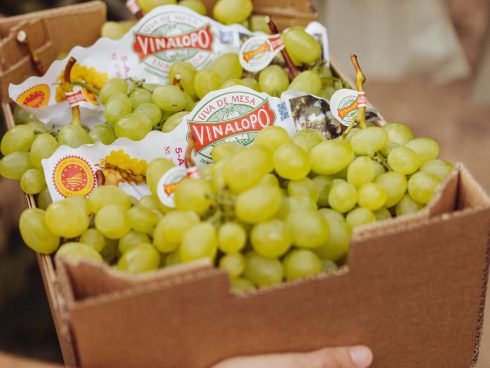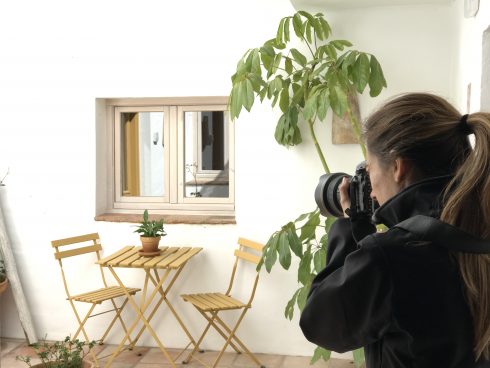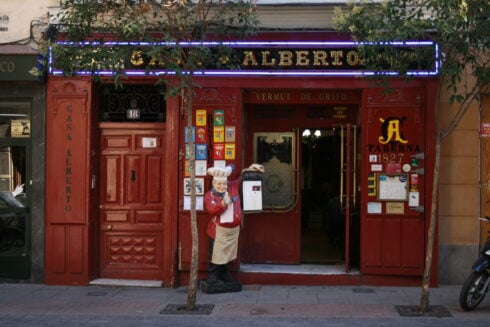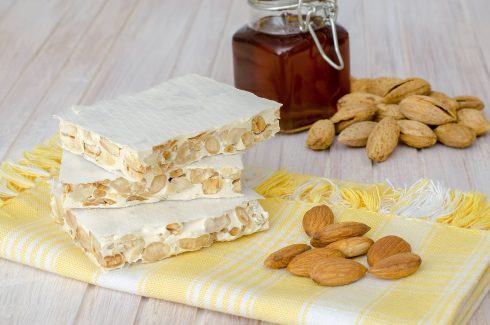SIMMERING in the sierras of southern Córdoba, the white town of Montilla presides over the hottest and driest wine regions in Spain.
In summer the sun seems hot enough to shrivel the fruit on the vine. Yet the alchemy of the harsh climate and local soil combines to produce perfect growing conditions for white Pedro Ximenez grapes which account for 95% of production here. So perfect that acclaimed American wine critic Robert Parker gave one of its wines his top score of 100.
That wine was a PX 2011 from Bodegas Alvear. Parker described it as ‘The most amazing Pedro Ximenez I’ve ever tasted”.
History, tradition and innovation rule at this family winery now in the hands of the eighth generation.
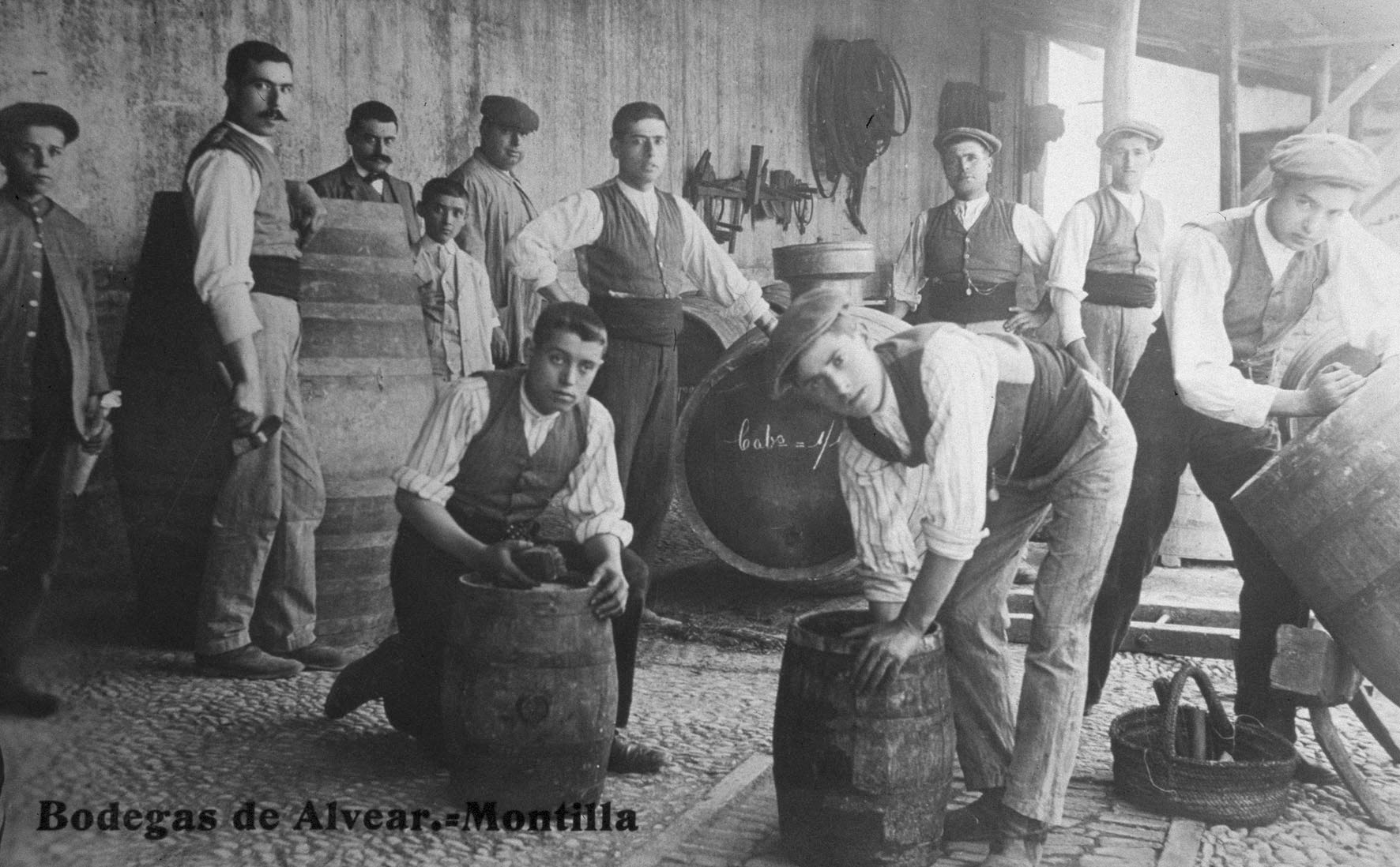
Founded in 1729, it is the oldest in Andalucia and the second oldest in Spain.
A stroll through its cool, musty cellars gives fascinating insight into a world of viticulture where ancient tradition meets modern techniques.
Wine, and olive oil too, are Montilla’s life blood, along with the tourists who come to buy them and explore the town’s palaces, churches, hermitages, convents and castles. Most were built between the 16th and 17th centuries, giving a glimpse of how things were almost 300 years ago when this exceptional winery was born.
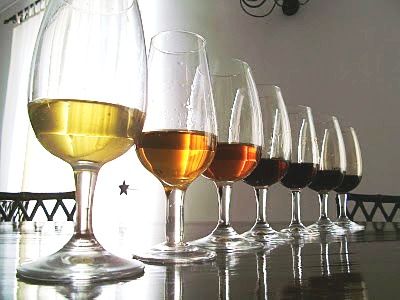
Throughout its long history, ownership has passed down from parent to child, each successive generation bringing their own ideas to the business as it strives to keep pace with new technology while preserving its long heritage. Most of the winery’s 40 staff also followed their own fathers into the business, some starting as young as 14 in the days when the winery paid for the education of workers’ children..
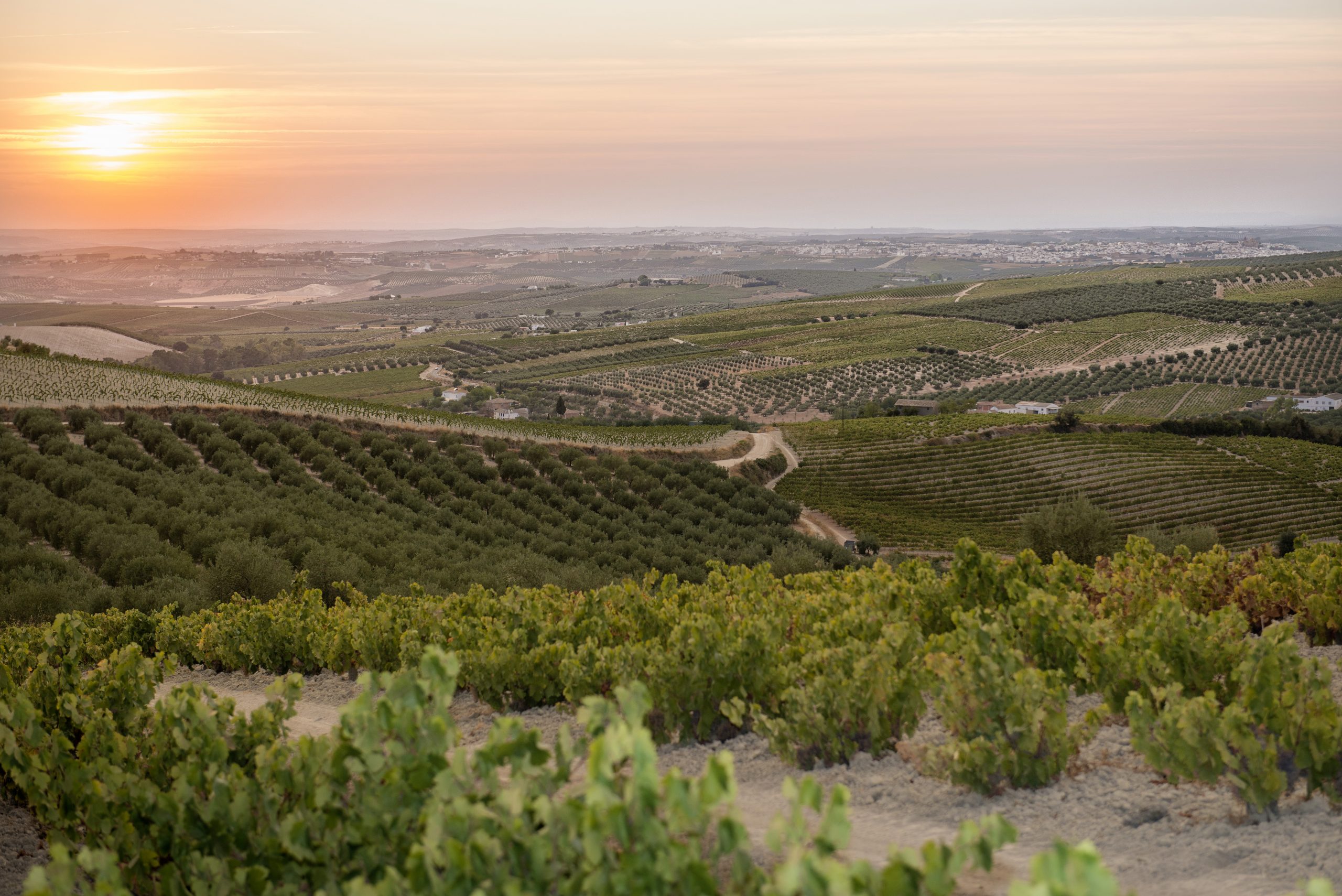
Fernando Gimenez Alvear, the current Executive President, is continuing a tradition started by his ancestor Diego Alvear Escalera, a Riojan who came to Montilla to buy vineyards and set up the winery.
But it was Fernando’s great grandfather who replanted the estates with Pedro Ximenes grapes after the phylloxera plague that devastated Spain at the end of the 19th century.
Now there are 500 acres producing PX wines, the jewels in the Alvear crown.
Fernando studied naval engineering according to family tradition but always knew his vocation was winemaking and he returned to the winery over 30 years ago.
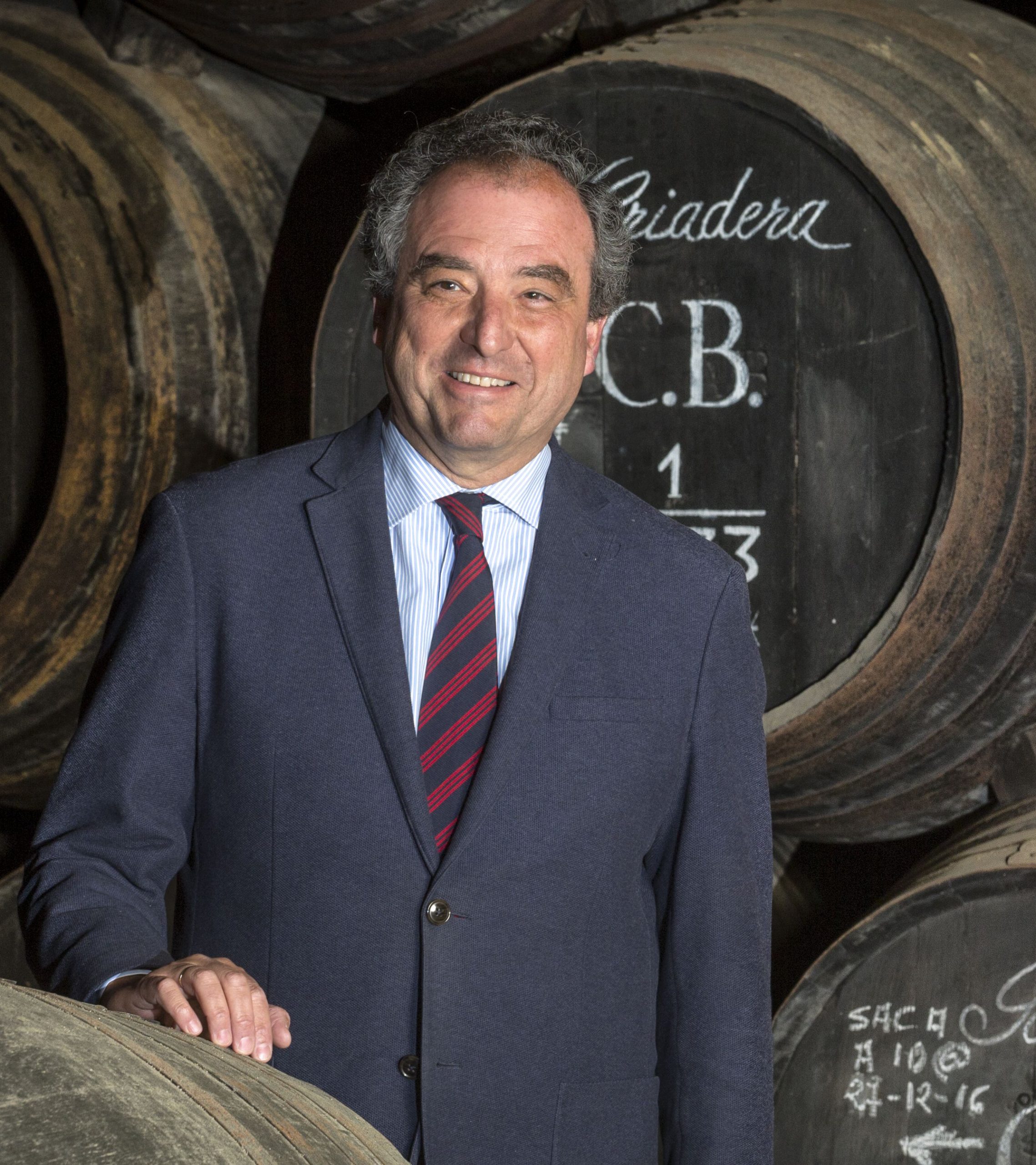
When asked what makes Alvear wine stand out, his formal demeanor gives way to a broad smile and his eyes shine with pride.
“The Pedro Ximenez grape is the true gem behind the Alvear wines,” he tells me. “The same grape variety becomes the sole basis of all our wines, from dry fino to fragrant amontillado and of course our acclaimed sweet Pedro Ximenez.”
How can the same grape produce such different wines?. “It’s all in the aging process” he says, pushing open a centuries-old oak door, and we step out of the glaring sunlight into the dark dank cellars.
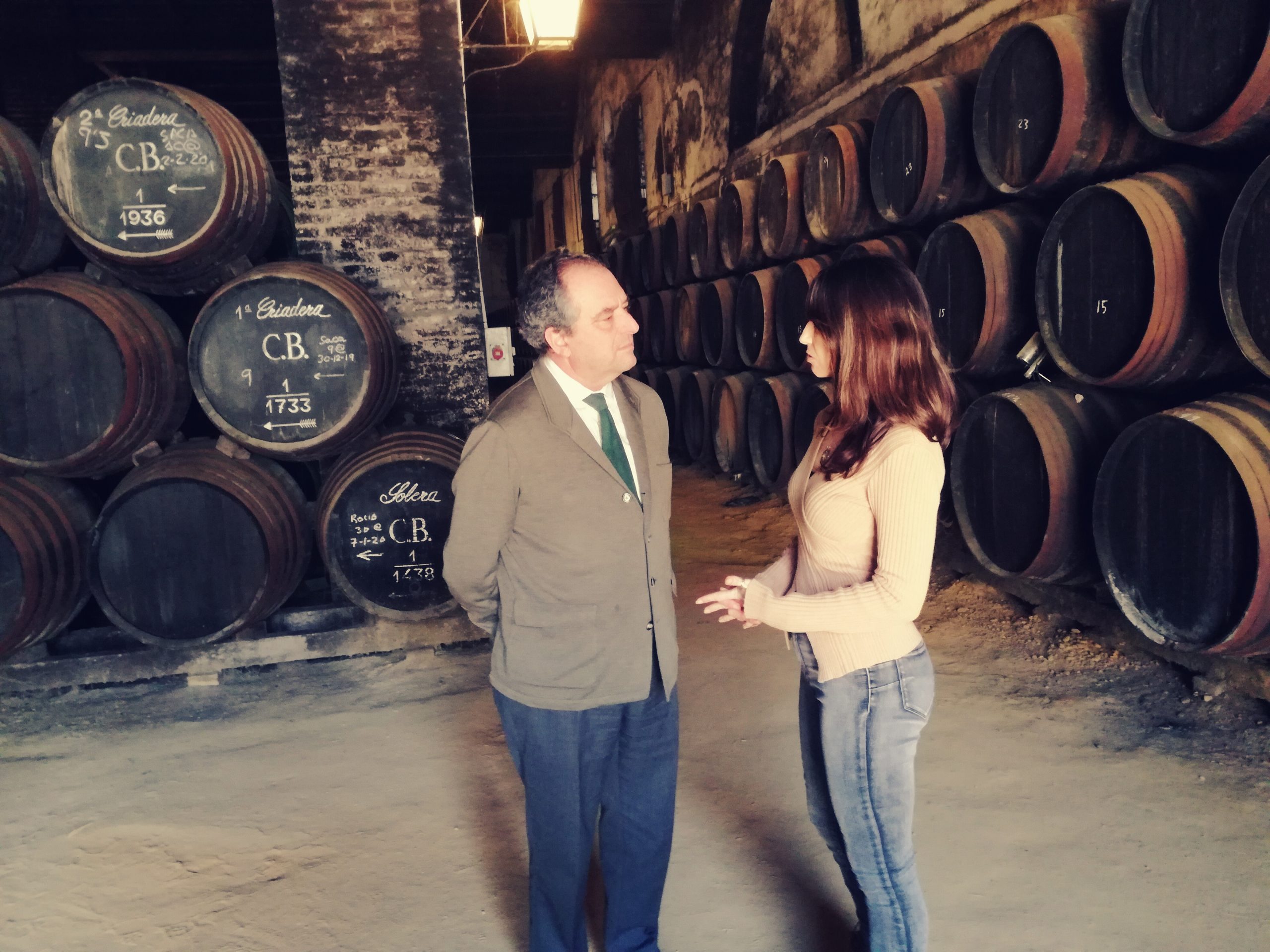
The wines – or what Brits know better as sherry – are subject to the miracle known as ‘ageing under a ‘velo de flor’, Fernando explains, ‘a natural biological process where a cream coloured cap of yeast develops on the top of the wine’.
Rows and rows of wine casks line the dusty floor, kept damp in the summer by water sprays to maintain optimum temperature. Fernando’s words echo softly around the quiet cellar as he continues to explain the complex process. “Wine casks or butts are filled to about five sixths leaving enough free space at the top for the flor to develop. The action of the yeast gives an extraordinary aroma and flavour to the wine.”
He shows me a cask in the centre of the cellar which has been especially designed with a glass side to reveal this alchemy.
This initial ageing process gives birth to Alvear’s Fino C.B, Alvear’s signature wine. Wherever Andalucians get together, you’ll find this ‘still wine’, meaning it has no added alcohol.
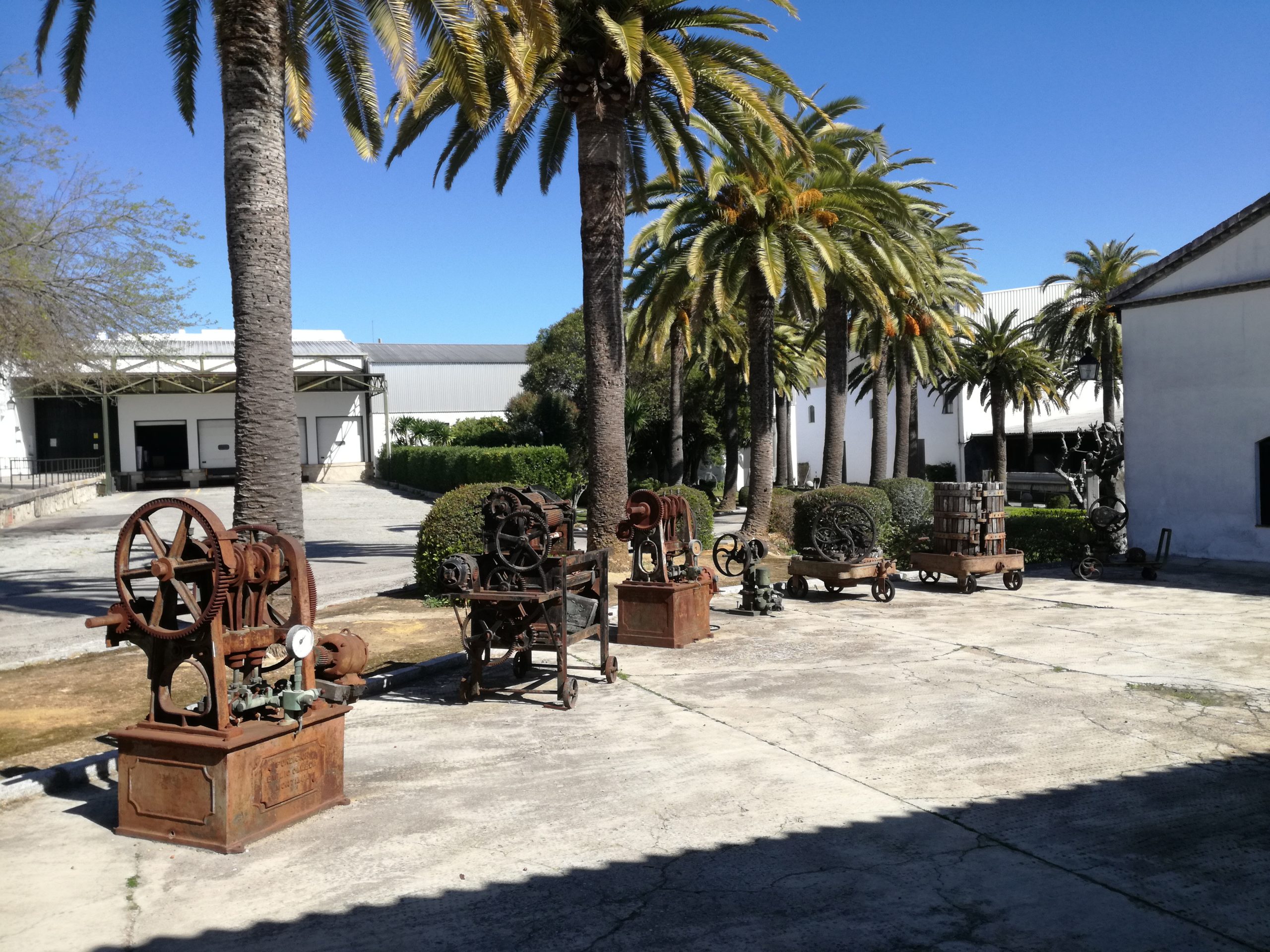
Wines subject to a longer ageing process – usually until the nutritional capacity of the flor has been exhausted – become Amontillados, acquiring a deep golden colour.
For darker, richer Oloroso the flor is not allowed to develop at all. The process is stopped by fortifying the wine to an ABV (Alcohol by volume) of 18 per cent (flor needs around 15per cent to grow) and by completely filling the wine casks to the top. The effects of ageing in these wines can be appreciated via the distinctive aromas left by oak and time.
For the famed dessert wine Pedro Ximenez – my favourite – the process is different again.This smooth, sweet chocolate-coloured wine is made by exposing the grapes to the sun once harvested. The grapes are spread over plaited esparto grass mats towards the end of August and are slowly sun dried until they turn into raisins. A dense must is then obtained from the crushed fruit to produce an authentic raisin juice.
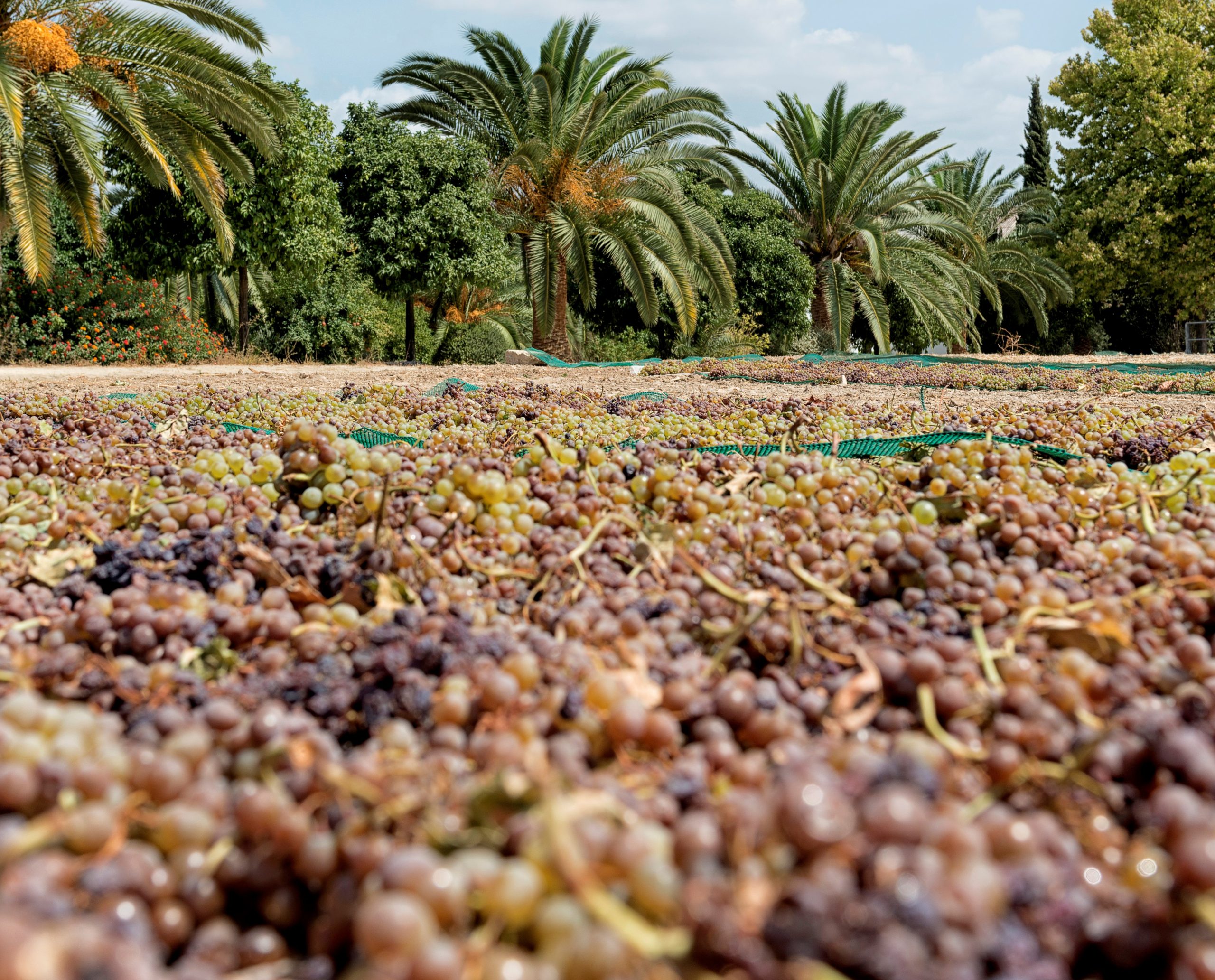
I was honoured during my visit to be given a preview of a new wine not yet released on the market: 3 Miradas Paraje de Riofrio Alto 2016. It’s taken from the best vines on the best plots, biologically aged under its yeast cap and blended in a butt for three years. The resulting wine is neither filtered nor cold stabilised, which means it is so good it doesn’t need to go through any other process. The first bottles will be winging their way to wine shops this spring.
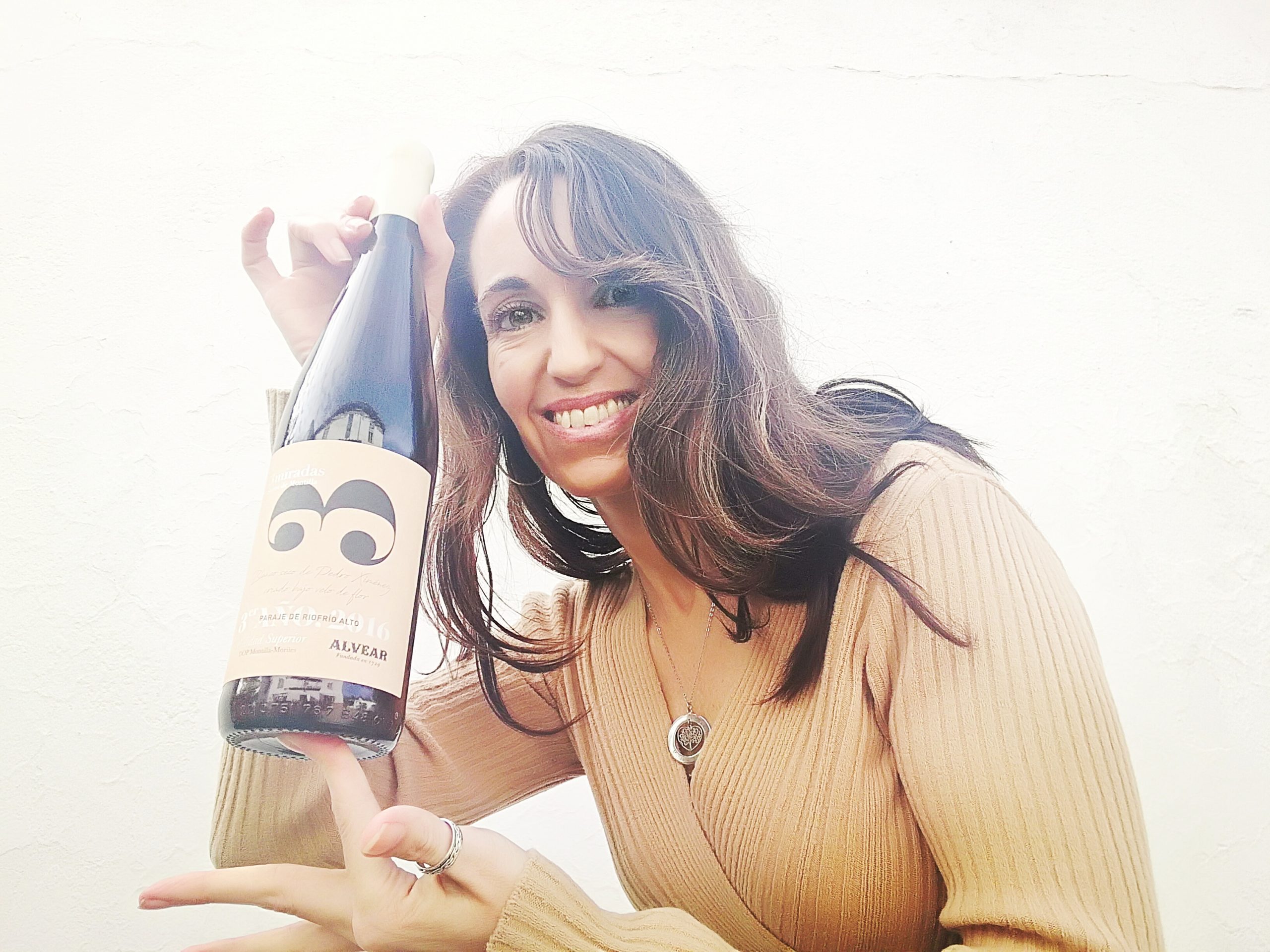
Bodegas Alvear has the capacity to age five million litres of wine in butts distributed around its various wineries: La Sacristia and El Liceo where the oldest wines are stored; Las Mercedes, known widely as C.B.; and Las Higueras and Buganvillas where the Pedro Ximenex wines are aged.
A further bodega in the old town centre called de la Casa was Alvear’s very first property and is regarded as a site of historic and artistic interest. This 18th century former manor house hosts the regions oldest soleras which contain amontilalado wines that are two centuries old.
A walk through this vintage winery with a direct family descendant of the Alvear dynasty to guide me through a tasting of these exceptional wines was the ‘velo de flor’ on my own perfect day.
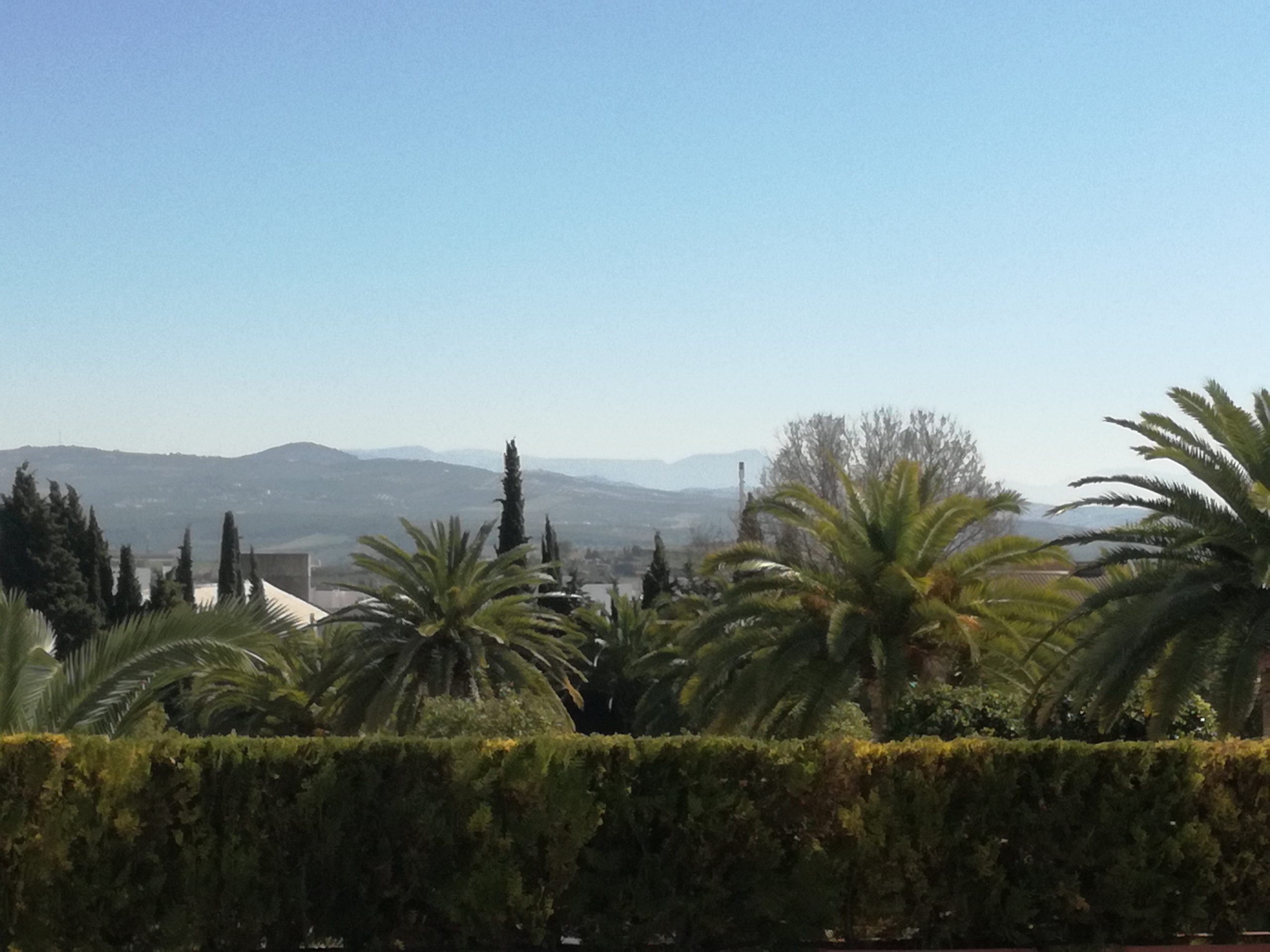
The Perfect Maridaje
Alvear’s award-winning wines are the perfect complement to the gastronomy of the Montilla-Moriles region – both with it and in it.
Local olives, grapes, cereal and garlic feature in dishes influenced by its Jewish, Moorish and Christian past. The result is a cuisine where wine plays an important role both for boosting flavours and as a key ingredient.
Today Pedro Ximenez wines have a place in the kitchens of every Michelin-starred chef as well as in the restaurant wine cellars and there’s one to go with anything, savoury or sweet.
Worth mentioning is the tapeo, an informal way of tasting a wide range of typical tapas of the area while enjoying Fino, Pale Cream or Amontillado served straight from the barrel by a traditional venenciador.
The 90 minute guided tour of Bodegas Alvear includes an introductory
tasting for 12 euros per person including tax.
Alvear’s Top Three
Fino C.B.
Variety: 100% Pedro Ximenez. Produced from the best musts of the Pedro Ximenez grapes. A typical product of that special process which takes place in the cask under a veil of yeast is the ‘crianza en flor’. C.B. stands for Carlos Billaneuva, the 19th century cellar master who marked the casks containing the best wines with his initials.
Colour: Subtle and delicate with a pale straw colour
Nose: Floral tones and a fresh almondy, salty flavour
Taste: Tangy with a refreshing finish and softness which makes it easy to drink
Enjoy it with: Any chilled aperitif – tapas, shellfish, fried fish, salads and even sushi
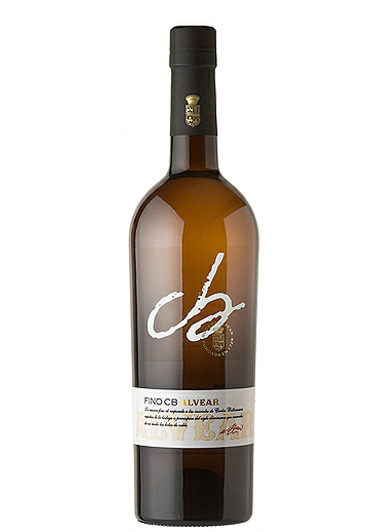
Pedro Ximenez 1927
Variety: 100% Pedro Xiemenez. Made from sun dried grapes and aged in American oak barrels using the traditional system of criaderas and soleras. It is the bodega’s hallmark and a blend of the winemakers’ selection.
Colour: Bright mahogany with iodine tones
Nose: Intense with notes of raisin, coffee, caramel chocolate
Taste: Elegant and sweet.You get the taste of chocolate and raisins
Enjoy it with: The sweet course. It brings out the flavour of dark chocolate desserts, fruit cake, fruit salad and even blue cheese. Or for total decadence, pour it liberally over vanilla ice cream.
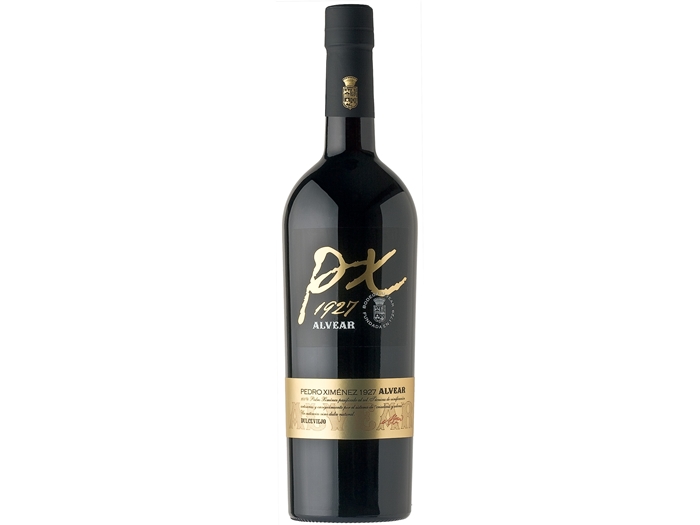
PX de Sacristia 2005
Variety: 100% Pedro Ximenez. Since 1978 Alvear has been the only winery in the world to produce a full vertical range of Pedro Ximenez vintages. Since then the best Pedro Ximemenz vintages have been statically aged in the Bodega de Pedro Ximenez de Scaristia
Colour: Dark mahogany with reddish edges accentuated when the glass is rotated.
Nose: Intense, with notes of old oak, roasted coffee beans and a hint of toasted caramel.
Taste: Velvety and dense with hints of raisin, dried apricots, dates, baked apples and jam.
Enjoy it with: Something sweet. It goes well with chocolate, fruit of any kind, fresh or candied or, if you’re into bad habits, a good Havana cigar.

Click here to read more Food & Drink News from The Olive Press.


